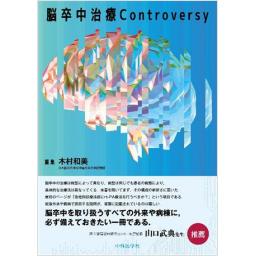1) 栗城綾子, 市川博雄, 加藤大貴, 他. 虚血性脳卒中の病型診断に対する経食道心エコー所見の有用性 : 自施設120例の検討. 脳卒中. 2011 ; 33 : 326-32.
2) Manning WJ, Silverman DI, Waksmonski CA, et al. Prevalence of residual left atrial thrombi among patients with acute thromboembolism and newly recognized atrial fibrillation. Arch Intern Med. 1995 ; 155 : 2193-8.
3) 中島一夫, 樋口陽, 後藤暁子, 他. 血栓塞栓症発症急性期の非弁膜症性心房細動患者における左房内血栓, 抗凝固療法と再発の関連性. 脳卒中. 2015 ; 37 : 409-16.
4) The Stroke Prevention in Atrial Fibrillation Investigators Committee on Echocardiography. Transesophageal echocardiographic correlates of thromboembolism in high-risk patients with nonvalvular atrial fibrillation. Ann Intern Med. 1998 ; 128 : 639-47.
5) Di Biase L, Santangeli P, Anselmino M, et al. Does the left atrial appendage morphology correlate with the risk of stroke in patients with atrial fibrillation? Results from a multicenter study. J Am Coll Cardiol. 2012 ; 60 : 531-8.
6) 日本脳神経超音波学会・栓子検出と治療学会合同ガイドライン委員会. 経食道心エコー図検査による塞栓源検索ガイドライン. Neurosonology. 2006 ; 19 : 136-46.
7) 菊野宗明, 古賀政利, 久米悠太, 他. 適正なワルファリン管理下で心原性脳塞栓症を発症し胸腔鏡下左心耳切除術を行なった1例. 臨床神経. 2018 ; 58 : 9-14.
8) Beppu S, Park TD, Sakakibara H, et al. Clinical features of intracardiac thrombosis based on echocardiographic observation. Jpn Circ J. 1984 ; 48 : 75-82.
9) Lin SL, Chen CH, Hsu TL, et al. A left atrial thrombus is not an absolute limitation to balloon mitral commissurotomy for patients with mitral stenosis. a serial transesophageal echocardiographic study. Cardiology. 1999 ; 92 : 145-50.
10) Silaruks S, Kiatchoosakun S, Kiatchoosakun S, et al. Resolution of left atrial thrombi with anticoagulant therapy in candidates for percutaneous transvenous mitral commissurotomy. J Heart Valve Dis. 2002 ; 11 : 346-52.
11) 藤野雅史. 心内 (左室内・左房内) 血栓に対する抗血栓療法の注意点は? 循環器ジャーナル. 2020 ; 68 : 720-7.
12) Watanabe T, Shinoda Y, Ikeoka K, et al. Dabigatran therapy resulting in the resolution of rivaroxaban-resistant left atrial appendage thrombi in patients with atrial fibrillation. Intern Med. 2017 ; 56 : 1977-80.
13) Miwa Y, Minamishima T, Sato T, et al. Resolution of a warfarin and dabigatran-resistant left atrial appendage thrombus with apixaban. J Arrhythm. 2016 ; 32 : 233-5.
14) Collins LJ, Silverman DI, Douglas PS, et al. Cardioversion of nonrheumatic atrial fibrillation. Reduced thromboembolic complications with 4 weeks of precardioversion anticoagulation are related to atrial thrombus resolution. Circulation. 1995 ; 92 : 160-3.
15) Corrado G, Tadeo G, Beretta S, et al. Atrial thrombi resolution after prolonged anticoagulation in patients with atrial fibrillation. Chest. 1999 ; 115 : 140-3.
16) Lip GY, Hammerstingl C, Marin F, et al. Left atrial thrombus resolution in atrial fibrillation or flutter : Results of a prospective study with rivaroxaban (X-TRA) and a retrospective observational registry providing baseline data (CLOT-AF). Am Heart J. 2016 ; 178 : 126-34.
17) Piotrowski R, Zaborska B, Pilichowska-Paszkiet E, et al. RIVAroxaban TWICE daily for lysis of thrombus in the left atrial appendage in patients with non-valvular atrial fibrillation : the RIVA-TWICE study. Arch Med Sci. 2020 ; 16 : 289-96.
18) Vidal A, Vanerio G. Dabigatran and left atrial appendage thrombus. J Thromb Thrombolysis. 2012 ; 34 : 545-7.
19) 中島一夫, 樋口陽, 後藤暁子, 他. 心原性脳塞栓症急性期よりのdabigatran etexilate投与後に左房内血栓消失が確認された非弁膜症性心房細動5例. 脳卒中. 2015 ; 37 : 111-6.
20) 佐桑真悠子, 青笹有紀, 周藤豊, 他. 外科的治療を検討した左心耳内可動性血栓由来の心原性脳塞栓症の2例. 臨床神経. 2020 ; 60 : 278-84.
21) Bernhardt P, Shimidt H, Hammerstingl C, et al. Fate of left atrial thrombi in patients with atrial fibrillation determined by transesophageal echocardiography and cerebral magnetic resonance imaging. Am J Cardiol. 2004 ; 94 : 8014.
22) Abe Y, Asakura T, Gotou J, et al. Prediction of embolism in atrial fibrillation, classification of left atrial thrombi by transesophageal echocardiography. Jpn Circ J. 2000 ; 64 : 411-5.
23) 矢坂正弘, 山口武典, 宮下孟士, 他. 脳塞栓症急性期における心内血栓の動態とその成長に及ぼす脱水の影響. 脳卒中. 1989 ; 11 : 388-95.
24) Piper C, Wiemer M, Schulte HD, et al. Stroke is not a contraindication for urgent valve replacement in acute infetive endocarditis. J Heart Valve Dis. 2001 ; 10 : 703-11.
25) Yoshioka D, Sakaguchi T, Yamauchi T, et al. Impact of early surgical treatment on postoperative neurologic outcome for active infective endocarditis complicated by cerebral infarction. Ann Thorac Surg. 2012 ; 94 : 489-96.
26) 日本循環器学会. 感染性心内膜炎の予防と治療に関するガイドライン (2017年改訂版). <https://www.j-circ.or.jp/cms/wp-content/uploads/2020/02/JCS2017_nakatani_h.pdf> (2021年12月19日閲覧)
27) Pisters R, Lane DA, Nieuwlaat R, et al. A novel user-friendly score (HAS-BLED) to assess 1-year risk of major bleeding in patients with atrial fibrillation : the Euro Heart Survey. Chest. 2010 ; 138 : 1093-100.
28) Holmes DR, Reddy VY, Turi ZG, et al. Percutaneous closure of the left atrial appendage versus warfarin therapy for prevention of stroke in patients with atrial fibrillation : A randomized no-inferiority trial. Lancet. 2009 ; 374 : 534-42.
29) Holmes DR Jr, Kar S, Price MJ, et al. Prospective randomized evaluation of the Watchman Left Atrial Appendage Closure device in patients with atrial fibrillation versus long-term warfarin therapy : the PREVAIL trial. J Am Coll Cardiol. 2014 ; 64 : 1-12.
30) Reddy VY, Doshi SK, Kar S, et al. 5-year outcomes after left atroal appendage closure : From the PREVAIL and PROTECT AF trials. J Am Coll Cardiol. 2017 ; 70 : 2964-75.
31) Melduni RM, Schaff HV, Lee HC, et al. Impact of left atrial appendage closure during cardiac surgery on the occurrence of early postoperative atrial fibrillation, stroke, and mortality : A propensity score-matched analysis of 10633 patients. Circulation. 2017 ; 135 : 366-78.
32) Yao X, Gersh BJ, Holes DR Jr, et al. Association of surgical left atrial appendage occlusion with subsequent stroke and mortality among patients undergoing cardiac surgery. JAMA. 2018 ; 319 : 2116-26.
33) Friedman DJ, Piccini JP, Wang T, et al. Association between left atrial appendage occlusion and readmission for thromboembolism among patients with atrial fibrillation undergoing concomitant cardiac surgery. JAMA. 2018 ; 319 : 365-74.
